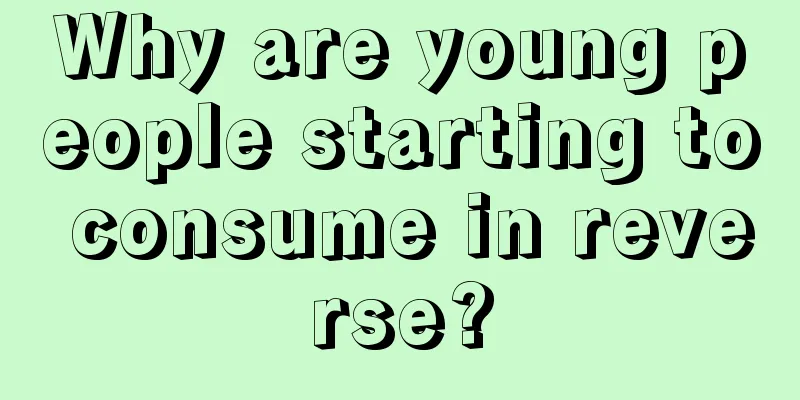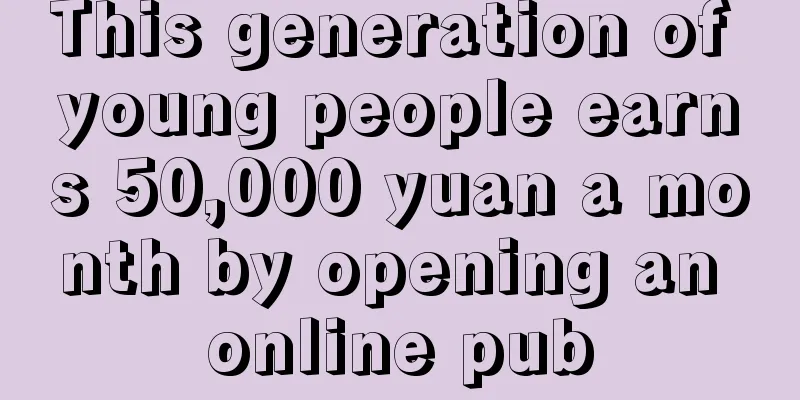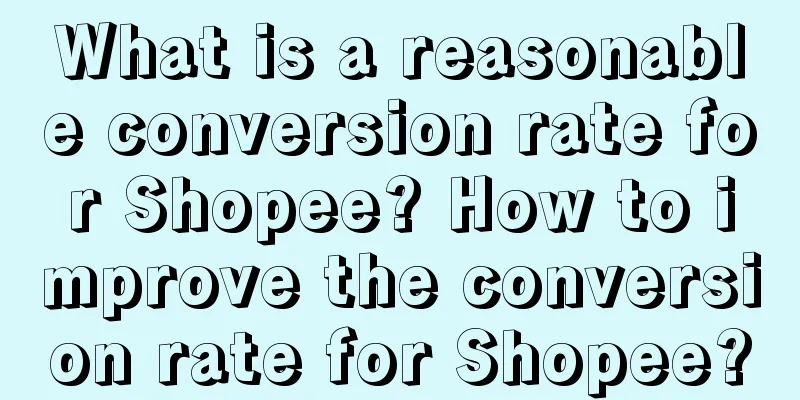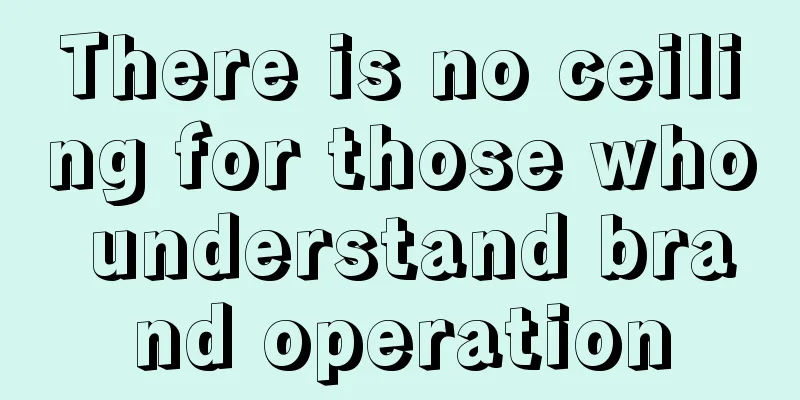Why are young people starting to consume in reverse?

In 2023, reverse consumption began to become popular on the Internet, and it has remained so until today. In September of that year, Li Jiaqi's words "How is it expensive?" during a live broadcast broke the defense of many people. They found that in today's increasingly difficult time to make money, there is no need to spend several times the price to buy several times the premium goods. The right choice is to rationally buy cost-effective goods. Subsequently, topics such as "Buy five and a half kilograms of Fenghua for 79 yuan", "Liquid foundation for 5.9 yuan", "Buy seven eyebrow pencils for 6 yuan", "Only go to B1B2 in the mall", "It's not that I can't afford Bosideng, it's that military coats are more cost-effective" emerged one after another, further consolidating people's thinking on rational consumption. After that, various topics related to reverse consumption became hot searches, such as "young people have started reverse consumption", "post-00 college students have started reverse consumption", etc. Why is the concept of reverse consumption so popular? We need to start with positive consumption. 1. Positive consumption: a manifestation of worldly successThe term "reverse consumption" sounds a bit mysterious, and it is actually quite mysterious. Most people can get the meaning of this term when they hear it, but they may not be able to explain its exact definition and specific manifestations. Since it is reverse, which is opposite to the positive direction, let’s talk about positive consumption first. Positive consumption actually comes from secular values, that is, by working hard, you can consume as you please, live a good life, and make others envy you. Zygmunt Bauman proposed the work ethic in "Work, Consumerism and the New Poor", an idea that one must work hard to achieve a goal, and when your talent does not match your ambition, you need to work twice as hard until you achieve your goal. As for the relationship between work and consumerism, he said: "In the industrial stage of modernity, one indisputable fact is that everyone must first be a producer before they have other identities. In the second stage of modernity, the era of consumers, this indisputable fact becomes: people must first become consumers before they can have other special identities." What this sentence means is that the main purpose of our work is to make money, and then spend the money to establish the difference between ourselves and others. Secular success values are the core driving force for positive consumption, which can be manifested in the following ways: 1. Buy branded goodsCompared with the history of non-brands, the history of brands is not long, but since its birth, it has become the most typical representative of consumerism. They have intentionally or unintentionally created a concept: buying branded things is good, and it is the best choice for you at this income level. To a certain extent, a brand represents the identity of a consumer. In his most famous book on consumption, Consumer Society, Baudrillard said: “People never consume products for their own sake (use value), but always use products (in a broad sense) as symbols that can highlight you, or be used to allow you to join an ideal group, or as a group with a higher status to get rid of a group with a lower status.” Some people buy Apple phones, some people buy Redmi phones. Is there any difference between the two in terms of usage? It can be said that there is no difference. But people who use Apple phones must think that they are not the same as people who use Redmi phones. There is a story in "The Consumer Society" about an ordinary business representative who bought a Mercedes-Benz car exactly the same as his boss's. When the boss found out, he immediately fired him. Today's version might be this: A salesman bought a Mercedes exactly like his boss's, and the next day his boss immediately bought a Porsche and never drove the Mercedes again. 2. Buy expensive things and buy morePositive consumption advocates a value of "materialism first", of which buying expensive things and buying more are typical manifestations. It emphasizes the improvement of personal value, social status and personal happiness through consumption. I don’t know since when, buying expensive goods has become a “correct way of doing things”, and buying cheap goods seems to have become a symbol of “getting a bargain”. The market has once formed the concept of “not seeking the best, but the most expensive”. The Veblen effect states that the more expensive a product is, the more consumers want to buy it, and the cheaper it is, the less they want to buy it. This is because the more expensive the product, the more it can show one's dignity and taste, and the more it can make friends and neighbors jealous. In Maslow's framework, when people's basic physiological and safety needs are met, they will pursue respect and self-actualization, and the possession of high-value goods is often seen as a means to achieve this level of needs. Respect and self-actualization here are largely achieved through consumption that makes others jealous. Buying a lot of things is a sign of material abundance, as well as social status and personal ability. It is said that Empress Dowager Cixi would have more than 100 dishes for each meal, and would only eat two bites of each dish. This was of course a huge waste, but it showed her style. This habit still exists today. Many people order dishes that are obviously larger than their appetite when they go to a restaurant, because they think that ordering so many dishes will make them look generous and establish an impression of generosity among their friends. With this in mind, they would rather waste food than order less than they want. "So-and-so has everything at home" is a sentence that reveals a state of material abundance. 3. Buy luxury goodsBuying luxury goods is the highest level of positive consumption. Luxury goods have always served only a small number of people. Vincent Bastien, author of "Luxury Strategy", said that equality is the enemy of luxury goods. Consumers in a consumer society often yearn for luxury goods. If a LV bag is placed on the desk, a colleague carrying an MK bag will be embarrassed to put his bag on the desk. A person wearing a Rolex watch often rolls up his cuffs, while a person wearing a Casio watch will not do so. Every secular consumer wishes they could buy luxury goods at will, and even if they can’t, they will find ways to save money to buy one or two. The purpose of the above positive consumption behaviors is essentially to show off, to demonstrate that one is living a good life, and to make others jealous. 2. Reverse consumption: anti-secular success theoryWhat is reverse consumption? Just do it the opposite of forward consumption. In essence, it is against secular values. Secular success means working hard to make money to buy better and more goods. The opposite is not to be brainwashed by secular success, but to just buy what I need and live the life I want. In the eyes of reverse consumers, a low-desire life is nothing more than a set of clothes, three meals, and a bed. It doesn’t cost much, and it’s enough to have enough. There is no need to compare with others. Its characteristics are as follows: 1. Buy white-label productsThe Huaxizi eyebrow pencil promoted by Li Jiaqi is priced at 79 yuan, while a non-brand eyebrow pencil can be bought for a few yuan. Is there a difference between the two? Yes, but is the difference so big as reflected in the price? I think far from it. I call the extra money "brand tax", which is the tax that consumers pay for buying branded goods. In the era of consumption downgrade, consumers have begun to return to the trend of buying white-label or manufacturer brands. Many people have begun to consume on Alibaba rather than Tmall. For example, I buy daily necessities such as bed sheets, quilt covers, and mobile phone cases on Alibaba. The ODM model of NetEase Yanxuan before its transformation was a manufacturer product platform. This model actually adopted the manufacturing process of well-known brand manufacturers, but did not use the brand for sales, such as slippers made by MUJI manufacturers, bags made by Samsonite manufacturers, shoes made by CK manufacturers, etc. Buying a Coach bag costs at least several thousand yuan, but buying a Coach bag on NetEase Yanxuan only costs a few hundred yuan, which is a manifestation of de-branding. The advantage of buying products from manufacturers is that you can buy products of the same quality as well-known brands at a lower price, which shows that consumers are increasingly unwilling to pay for the "brand tax". 2. Buy products with high cost performance and usefulnessIn the consumption upgrade stage, almost every brand is considering how to upgrade. Improving brand tone and raising prices through product development, packaging, marketing and other means are the ultimate goals pursued by brands. Some brands, such as Li Ning and Anta, have achieved the first step of brand upgrading. However, market trends are changing rapidly. With the arrival of the consumption downgrade trend, consumers have become more rational. They are no longer willing to pay for gimmicks such as packaging and marketing, but instead seriously consider the cost-effectiveness of a product. The essence of cost-effectiveness at this stage is to consider the quality of the product. If a product is of good quality and not expensive, it will definitely be popular with consumers. For example, brands such as Honor, Redmi, and IQOO are competing fiercely for this market. At the same time, consumers begin to carefully consider whether they really need something before buying it. They will buy it if they need it. If it ends up gathering dust, there is no need to buy it. In the past, I wanted to buy anything new I saw. Now, when I see something new, I first check whether it is necessary to buy it or whether it is flashy and impractical. If I really want to buy it, I will check whether there are any substitutes or second-hand ones on Xianyu before I make a purchase. 3. Don’t buy products that are purely for show.Like luxury goods, the main attribute of this kind of goods is to show off. Carrying luxury goods out on a daily basis symbolizes success, wealth, taste, fashion and trend. People who engage in reverse consumption will reduce their desires, and their vanity and jealousy will gradually decrease. In this case, their consumption tends to be rational, and they will not blindly pursue brands and trends, but try to resist this invisible social pressure. Not only will they not buy luxury goods to show off, but they will also be proud of buying cost-effective goods. Brands like Uniqlo and MUJI do not have any logos on their clothes. People who buy these brands do not care about the distinguishing value of the brand logo, they just want to dress decently. What's even worse is the choice of using military coats instead of Bosideng down jackets. As a category, down jackets have not been widely accepted for a long time. Before the appearance of down jackets, military coats, which have existed for many years, have good warmth retention effect. The above behaviors basically go beyond what Veblen called "conspicuous consumption". They consume not to show off, but just to save money and be comfortable. 3. Why is reverse consumption so popular?So why is reverse consumption so popular? How did it become a consumption trend among young people? 1. Consumption downgradeThere is no need for much explanation. Consumption downgrade has gradually become a trend, behind which is the sensitive reaction of consumers to the economic situation and their personal future expectations. During periods of economic prosperity and steady growth in personal income, people tend to be optimistic about the future. This psychological state prompts consumers to be willing to upgrade their consumption - purchasing higher-priced, higher-quality goods and services as a way to enjoy life and improve their quality of life. However, when economic growth slows, the job market is unstable, or personal economic conditions fluctuate, people's optimistic expectations for the future are affected, and insecurity and concerns about future uncertainty begin to dominate. In this context, consumers’ behavior patterns shift from consumption upgrading to consumption downgrading. This shift is reflected in people starting to reduce consumption of non-essential goods, seek more cost-effective goods and services, and increase savings to cope with possible economic difficulties in the future. Consumption downgrade does not simply mean a decrease in total consumption, but a change in consumption structure and consumption mentality. Consumers pay more attention to practicality and economy when making shopping decisions, and tend to buy goods that can meet basic needs without being too luxurious. This change is both a direct response to personal economic conditions and an adaptation to changes in the overall economic environment. 2. White-label products are rising and being seenIn the past, consumers were often influenced by brand reputation when purchasing goods, believing that products from well-known brands represent high quality. However, with the change of consumption concepts and the transparency of information on e-commerce platforms, consumers have gradually realized that many white-label products are as good as those of well-known brands, but are more affordable, and many white-label products are themselves suppliers of those big brands. The reason behind this phenomenon is that white-label products often do not need to bear high brand marketing and advertising costs, and can therefore be provided to consumers at more reasonable prices. In addition, with the development of e-commerce platforms, Alibaba, Pinduoduo, Douyin and other platforms have launched policies and measures aimed at supporting such products. Consumers can also purchase these goods directly from producers, greatly shortening the supply chain and reducing the costs of intermediate links. This not only makes commodity prices more transparent, but also allows consumers to more directly evaluate and compare product quality. 3. Consumers begin to be rational and brands are demystifiedWith the rapid development of the economy, people's income levels have generally increased, and consumers' cognitive levels have also been increasing. This change has led to a significant shift in consumer behavior - from impulsive consumption and brand following in the past to a more rational consumption model. For rational consumers, most emotionally appealing advertisements can no longer touch them. Some consumers have begun to realize that the success of many brands relies more on marketing strategies and advertising investment than on the quality of the products themselves. Well-known brands often add a high brand premium to the price of their products, which is largely used to cover the costs of advertising and marketing. As consumers become more aware of this operating model, they have become skeptical of traditional brand values and are beginning to seek more tangible value - that is, paying more attention to the quality, function and cost-effectiveness of the product itself, rather than simply the brand reputation. This change reflects consumers' increasingly rational consumption perspectives and a demystification of brand appeal. 4. Consumers start to pay more attention to themselves rather than the outside worldIn modern society, consumption behavior is largely regarded as a tool for social comparison. Many consumers buy expensive goods and services not only to meet personal needs, but also to show their economic strength and social status to others, thereby arousing the envy or jealousy of others. This phenomenon has contributed to a social atmosphere that takes pride in material consumption. However, in recent years, this consumption motivation seems to be changing. More and more consumers are turning to a more introverted consumption concept, and their consumption behavior is more based on their own needs and preferences rather than external expectations or evaluations. This transformation is fundamentally a reflection and response to the "consumer society". In this process, "Buddhist consumption" and "low-desire consumption" have become a new trend, reflecting consumers' indifference and self-liberation from materialism and social comparison pressure. Under this consumption concept, personal happiness and satisfaction no longer depend on the opinions of others, but are based on personal inner experience and real needs. Consumers begin to pursue products and services that can truly bring personal happiness and satisfaction, rather than just symbols of social status. The book "Tokyo Style" is mainly about the people who rent houses in Tokyo. Many of these Japanese people are artists or unknown singers. They rent the cheapest houses with the lowest living standards, and use the remaining energy to fulfill their dreams or live the life they like. Such people are the representatives of the correct low-desire life. (Source: Tokyo Style, a house rented by a Tokyo drifter. He aspires to be a musician, but is not yet famous, so he works at a construction site to make a living except on rainy days.) 4. In the face of reverse consumption, what can brands do?If young people start to consume in reverse, what should brands do? Here are some suggestions: 1. High-end brands: price increaseFor high-end brands or luxury brands, the first action is to raise prices. Yes, raise prices, you heard it right. Two years ago, a picture of the highlights of a conference call of the luxury group LVMH was widely circulated online, which mentioned: LVMH's clients are divided into three categories: ultra-high net worth (individual annual income of more than 10 million RMB or family annual income of more than 30 million RMB), high net worth (individual annual income of 3 million to 10 million or family annual income of 10 million to 30 million), and no income (those below the above two categories are classified as having no income by LVMH, including students and ordinary white-collar workers). Ultimately, LVMH intends to continue raising prices to eliminate its shrinking base of “no-income” customers. In the face of the economic downturn caused by the epidemic, LVMH's strategy of raising prices is very correct. On the one hand, the wealth of the middle class (people with an income of less than 3 million as defined by LVMH) has shrunk under the epidemic. In this case, they live frugally and save wherever they can. They will never consume luxury goods that they could afford with gritted teeth before. For high-income people, their wealth is just a number, so their consumption behavior will not be affected. Therefore, in the face of the storm of reverse consumption, what high-end brands need to do is to increase unit prices and earn higher profits from those who are not affected by positive consumption. 2. Intermediate brands: improving cost performanceFor most brands, when faced with reverse consumption, the first thing to do is to improve the price-performance ratio, so that consumers feel that the products they buy are worth it and they pay less "brand tax". For example, Heytea used to cost more than 30 yuan per cup, which attracted a large number of consumers to queue up in the era of consumption upgrading. However, under the reverse consumption trend, it can only reduce the price to more than ten yuan per cup. If it still maintains a price of more than 30 yuan per cup, then everyone will vote with their feet and choose Mixue Bingcheng. Similarly, Luckin Coffee reduced its price to 9.9 yuan per cup to respond to reverse consumption, and Starbucks, whose average price is more than 30 yuan, was hit hard by this. Uniqlo, for example, has adopted the SPA (specialty retailer) model to achieve integrated management from design, production to sales, reducing costs and allowing consumers to buy cost-effective clothing. Muji has reduced costs and lowered the price of goods by removing unnecessary packaging, labels and advertisements. But high cost-effectiveness and low price are not the same thing. Consumers expect goods to be neither expensive nor of poor quality. They hope to get good value for money. 3. Build brand concept in the long termReverse consumption does not mean that consumers completely abandon brands. They just don’t like brands with low cost-effectiveness and are unwilling to pay “brand tax”. If the brand has a high cost-effectiveness and can provide high-quality services, then consumers will still give priority to the brand. The brand itself has advantages that white-label products do not have. First, it can build trust, thereby reducing the decision-making cost of consumers. With a brand, consumers no longer need to spend time to distinguish which products are of good quality and which are of poor quality. They only need to choose brands that represent good quality. On this basis, if the brand is cost-effective, consumers have no reason not to choose it. Secondly, it is the spiritual attribute of the brand. Since white-label products are not engaged in sustainable 2C business, they will not establish brand spirit at all. Consumers buy white-label products just to save money on some daily consumer goods, not to pursue the spirit embodied by these white-label products. Consumers who engage in reverse consumption have spiritual pursuits. If the product itself has a high cost-effectiveness and meets their spiritual pursuits, they will also choose it. Therefore, brands with long-term ambitions must attach importance to the construction of brand spirit, which is an upgrade based on brand trust and is also the only way for brands to establish lasting influence. Author: Xunkong Source: WeChat public account "Xunkong's Marketing Revelation (ID: xunkong2005)" |
>>: B station is making great efforts! These jumps have opened up the whole domain pattern
Recommend
Unveiling the secrets of leveraging marketing: value benefits, six common methods, and the "three degrees" that need to be paid attention to
In the brand communication strategy, leverage mark...
How much does it cost to open a store on Amazon? A summary of Amazon platform fees
To know how much profit you can make on the Amazon...
How much is the salary of the cross-border e-commerce operation department? What is the content of the operation work?
The rapid development and expansion of the cross-b...
How does Lazada deliver Southeast Asian goods? What are the delivery time requirements?
Merchants who open stores on the Lazada platform n...
Starbucks awaits long recovery
Faced with increasingly fierce competition and pri...
How many points will Shopee deduct for delayed delivery? How to avoid delays?
As one of the most promising e-commerce platforms,...
The secret of Pinduoduo's explosive sales lies in the details
What is the secret to explosive sales in e-commerc...
Young people who are so sophisticated and stingy are turning supermarkets into outlet malls
With the development of the new economy, consumers...
How does a brand grow?
The elements of brand success are the result of th...
Buyers, managers, small and medium-sized businesses: semantic extension of Xiaohongshu e-commerce
While pursuing commercialization, how Xiaohongshu ...
How to solve the problem of Amazon's store closure? What are the methods?
Once a related situation occurs on Amazon, if ever...
The ceiling account for women's clothing reviews! 2.45 million followers, and the blogger is a man!
Douyin's ceiling account for women's cloth...
When the economy is in a downturn, what should bosses focus on?
The economic downturn is an overall phenomenon. Ev...
Luo Yonghao doesn't make friends with video accounts
This article introduces in detail the current situ...
Where is the Amazon Compliance Reference and how do I use it?
The most fearful thing when opening a store on Ama...









